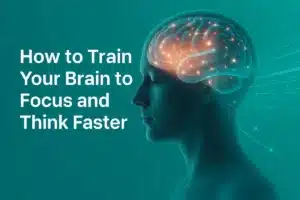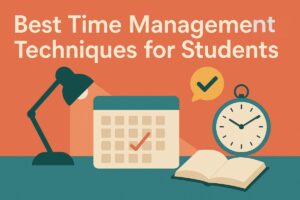Understanding the difference between a growth mindset vs fixed mindset can transform how you approach challenges, learning, and success. Coined by psychologist Carol Dweck, these mindsets shape our beliefs about intelligence, talent, and personal development. While a fixed mindset assumes abilities are static, a growth mindset thrives on effort, learning, and resilience. In this article, we’ll explore the key differences, benefits, and strategies to shift from a fixed to a growth and fixed mindset for lifelong success.
What is a Growth Mindset vs Fixed Mindset?
Defining Growth Mindset
A growth mindset is the belief that abilities and intelligence can be developed through dedication, hard work, and learning. People with this mindset:
-
Embrace challenges
-
Learn from criticism
-
Persist despite setbacks
-
See effort as a path to mastery
Defining Fixed Mindset
A fixed mindset is the belief that intelligence and talents are innate and unchangeable. Individuals with this mindset:
-
Avoid challenges
-
Ignore constructive feedback
-
Give up easily
-
Feel threatened by others’ success
Key Differences Between Growth and Fixed Mindset
Approach to Challenges
-
Growth Mindset: Views challenges as opportunities to grow.
-
Fixed Mindset: Avoids challenges due to fear of failure.
2. Response to Failure
-
Growth Mindset: Sees failure as a learning experience.
-
Fixed Mindset: Views failure as a reflection of inability.
3. Effort and Persistence
-
Growth Mindset: Believes effort leads to improvement.
-
Fixed Mindset: Thinks effort is pointless if talent is lacking.
Feedback and Criticism
-
Growth Mindset: Welcomes feedback for growth.
-
Fixed Mindset: Takes criticism personally.
Benefits of a Growth Mindset
1. Improved Learning & Skill Development
A growth mindset fosters continuous learning, making individuals more adaptable and skilled.
2. Greater Resilience
Those with a growth and fixed mindset comparison often show higher resilience in facing obstacles.
3. Higher Achievement
Studies show that students and professionals with a growth mindset achieve more due to persistence.
4. Enhanced Creativity & Innovation
A growth mindset encourages experimentation and creative problem-solving.
How to Develop a Growth Mindset
1. Embrace Challenges
Step out of your comfort zone and take on new challenges to build confidence.
2. Learn from Criticism
Use feedback as a tool for improvement rather than a personal attack.
3. Celebrate Effort, Not Just Results
Focus on the process rather than just the outcome to reinforce persistence.
4. Replace “I Can’t” with “I Can’t Yet”
Adding “yet” to self-doubt statements reinforces the belief in potential growth.
5. Surround Yourself with Growth-Minded People
Being around individuals with a growth mindset can positively influence your own thinking.
Real-Life Examples of Growth vs Fixed Mindset
1: Students in School
-
Growth Mindset: A student who struggles in math but keeps practicing improves over time.
-
Fixed Mindset: A student who believes they’re “bad at math” gives up early.
2: Workplace Success
-
Growth Mindset: An employee learns new skills to advance their career.
-
Fixed Mindset: An employee avoids training, fearing they won’t succeed.
Common Misconceptions About Growth and Fixed Mindsets
Myth 1: You Either Have a Growth or Fixed Mindset
Reality: Mindsets can vary in different areas of life.
Myth 2: A Growth Mindset Means Always Being Positive
Reality: It’s about persistence, not ignoring difficulties.
Myth 3: Effort Alone Guarantees Success
Reality: Smart effort (strategic learning) is key, not just hard work.
H2: Scientific Research on Growth Mindset
Studies by Carol Dweck and others show that students taught growth mindset principles perform better academically. Companies promoting a growth mindset culture see higher innovation and employee engagement.
Frequently Asked Questions (FAQs)
1. Can someone change from a fixed to a growth mindset?
Yes, with self-awareness and consistent practice, shifting mindsets is possible.
2. Is a growth mindset always better?
While beneficial, balance is key—some innate strengths exist, but effort maximizes potential.
3. How can teachers foster a growth mindset in students?
By praising effort, encouraging challenges, and teaching resilience.
Conclusion
The battle between growth mindset vs fixed mindset determines personal and professional success. By adopting a growth mindset, you unlock potential, embrace learning, and achieve greater fulfillment. Start small—challenge limiting beliefs, seek feedback, and persist through setbacks. The journey from a fixed to a growth mindset is transformative, leading to lifelong growth and success.


